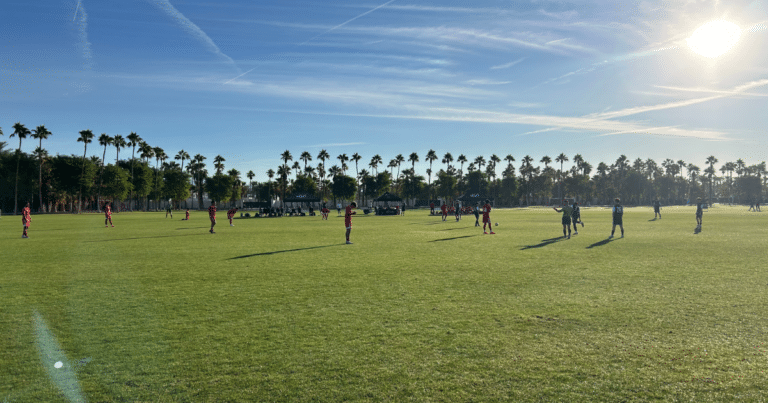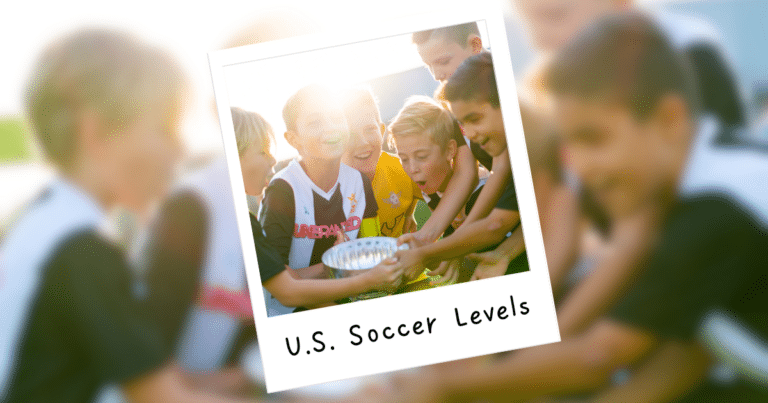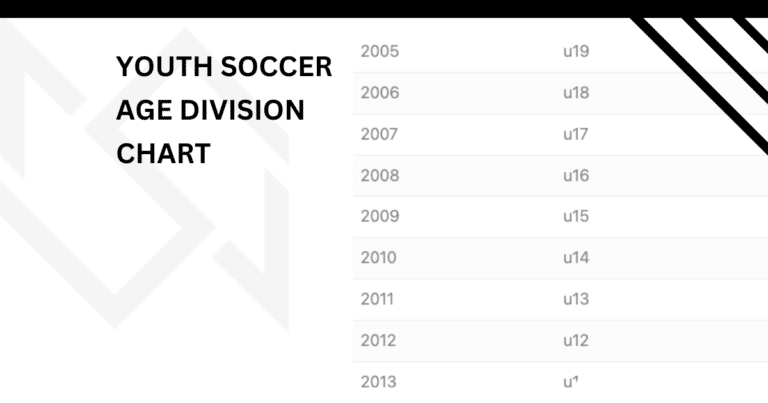Handball Rules in Soccer

A handball is a common foul where a player intentionally touches the ball with their hand or arm, between the tips of their fingers and the bottom of their shoulder.
Key Takeaways From This Article:
- By rule, not all soccer balls that hit the hand are considered handbells. [Jump to the exceptions]
- Players can legally use their shoulders to hit the soccer ball.
- Depending on the situation, a handball could result in a free kick, yellow card, or red card.
The handball rule is enforced to prevent players from using their hands to control the ball, which would give them an unfair advantage over their opponents.
However, the rules surrounding handball in soccer can be quite complex, leading to confusion and disagreement among players, coaches, parents, and fans.
In this article, I’ll cover everything you’ll need to know about a handball in soccer.
This will help you make your point on the sideline with other parents (not that you need to prove your knowledge of the game).
What Are the Handball Rules?
When it comes to handball in soccer, there are a few basic rules that you need to know.
These rules are in place to ensure fair play and to prevent players from gaining an unfair advantage over their opponents.
Rule 1: What is a Handball?
A handball occurs when a player touches the ball with their hand or arm. However, not all instances of handball are considered a foul.
According to the rules, a handball is only a foul if the player intentionally touches the ball with their hand or arm, or if they make their body unnaturally bigger by extending their arm or hand.
Rule 2: When is a Handball a Foul?
If a player commits a handball foul, the opposing team is awarded a free-kick or penalty kick depending on the location of the foul.
It’s important to note that handball fouls can occur anywhere on the field, not just within the penalty area.
Rule 3: Exceptions to the Handball Rule
There are exceptions to this rule. Here are some of them…
- If the ball accidentally touches the hand or arm of a player
- If a player is using their arm to protect their face or body
- If the soccer ball hits a player’s arm after it has deflected off another player or object
- If a player’s arm is in a natural position, such as when running or jumping, and the ball touches their arm
Read the above again. This is where many parents and coaches get mixed up. A handball is not always a violation!
Rule 4: The Shoulder is Not Considered a Handball
Finally, it’s important to note that the shoulder is not considered a part of the arm when it comes to handball fouls.
If the ball hits a player’s shoulder, it’s not considered a handball, even if the player’s arm is in an unnatural position.
What Happens After a Handball?
When a player commits a handball offense in soccer, several consequences can occur. Here are some of the most common:
- Free Kick or Penalty Kick: The opposing team is awarded a free kick or penalty kick, depending on where the offense occurred on the field. If the offense happens inside the penalty area, the opposing team is awarded a penalty kick (PK).
- Yellow Card: If the handball offense was intentional or the player’s arm was in an unnatural position, the player committing the offense may receive a yellow card from the referee.
- Red Card: If the handball offense was intentional and denied a clear goal-scoring opportunity, the player committing the offense may receive a red card from the referee and be sent off the field.
The severity of the offense and the resulting consequences depend on a variety of factors, including the intent, the position of the arm, and the location of the offense on the field.
What Happens if the Ref Doesn’t See a Handball?
If the referee doesn’t see a handball offense, play will continue as normal. This is always true for youth, high school, and college soccer games. This is why it’s important to play the whistle.
However, in a professional match, if the opposing team protests the decision, the referee may consult with the assistant referees or video assistant referees (VAR) to determine if a handball offense occurred.
If the VAR determines that a handball offense did occur, the referee may award a free kick or penalty kick to the opposing team.
Conclusion
Handball rules in soccer are an essential aspect of the game that distinguishes it from other sports.
I realize when handballs occur in youth soccer, it can demoralizing but it doesn’t have to be. It’s just part of the game.

Players, coaches, and officials need to understand the rules of the game and the various situations in which handball can occur to ensure fair play and accurate calls on the field!

Written By: Beau Bridges
Beau is the founder of SoccerNovo, dedicated to helping players and parents navigate the youth soccer landscape. As a former youth coach and soccer parent, he shares insights on player development, recruiting, and the ever-evolving soccer scene in the U.S.
Let’s connect





